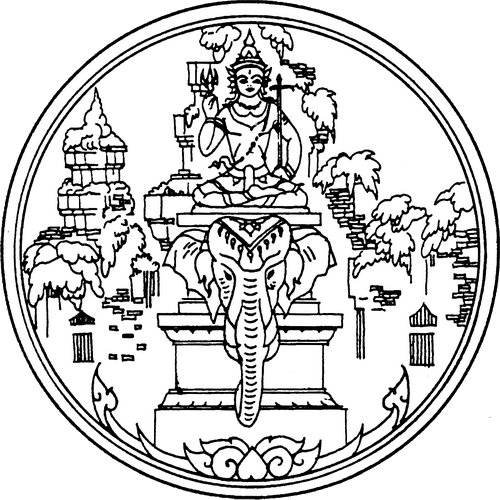|
Alberuni's India
Al-Biruni's ''India'' (), also known by the shortened title ''Kitab al-Hind'', is a book written by Persian polymath Al-Biruni about history, religions, and cultures of India. It was described by the Islamic scholar Annemarie Schimmel as the first objective book on the history of religion. The book was translated into German and afterward to English by Eduard Sachau. Background Biruni's earlier contemporaries, such as Jayhani, the vizier of the Samanid Empire, had described parts of India in his book ''Book of Routes and Kingdoms''; however Biruni considered this and other books by Arab writers marred by the authors' generally superficial knowledge about India and judgemental views on aspects of India they found or suspected to be incompatible with Islam. Biruni and his teacher Abu Nasr Mansur had studied earlier Indian texts on mathematics, such as the '' Sindhind'', benefiting from the historical links between his childhood Khwarazm and India. His book '' Chronology of A ... [...More Info...] [...Related Items...] OR: [Wikipedia] [Google] [Baidu] |
Eduard Sachau
Carl Eduard Sachau (20 July 1845 – 17 September 1930) was a German orientalist. He taught Josef Horovitz and Eugen Mittwoch. Biography He studied oriental languages at the Universities of Kiel and Leipzig, obtaining his PhD at Halle in 1867. Sachau became a professor extraordinary of Semitic philology (1869) and a full professor (1872) at the University of Vienna, and in 1876, a professor at the University of Berlin, where he was appointed director of the new Seminar of Oriental languages (1887). Sachau travelled to the Near East on several occasions (see his book ''Reise in Syrien und Mesopotamien'', published 1883) and became known for his work on Syriac and other Aramaic dialects. He was an expert on polymath Al-Biruni and wrote a translation of ''Kitab ta'rikh al-Hind'', Al-Biruni's encyclopedic work on India. Sachau also wrote papers on Ibadi Islam. While a student at Kiel, he became part of the fraternity ''Teutonia Kiel'' (1864). He was a member of the Vienna and ... [...More Info...] [...Related Items...] OR: [Wikipedia] [Google] [Baidu] |
Rajasthan
Rajasthan (; Literal translation, lit. 'Land of Kings') is a States and union territories of India, state in northwestern India. It covers or 10.4 per cent of India's total geographical area. It is the List of states and union territories of India by area, largest Indian state by area and the List of states and union territories of India by population, seventh largest by population. It is on India's northwestern side, where it comprises most of the wide and inhospitable Thar Desert (also known as the Great Indian Desert) and shares a border with the Pakistani provinces of Punjab, Pakistan, Punjab to the northwest and Sindh to the west, along the Sutlej-Indus River valley. It is bordered by five other Indian states: Punjab, India, Punjab to the north; Haryana and Uttar Pradesh to the northeast; Madhya Pradesh to the southeast; and Gujarat to the southwest. Its geographical location is 23°3' to 30°12' North latitude and 69°30' to 78°17' East longitude, with the Tropic of Can ... [...More Info...] [...Related Items...] OR: [Wikipedia] [Google] [Baidu] |
Yoga Sutras Of Patanjali
The ''Yoga Sutras of Patañjali'' (IAST: Patañjali yoga-sūtra) is a compilation "from a variety of sources" of Sanskrit sutras (aphorisms) on the practice of yoga – 195 sutras (according to Vyasa, Vyāsa and Krishnamacharya) and 196 sutras (according to others, including BKS Iyengar). The ''Yoga Sutras'' were compiled in India in the early centuries CE by the sage Patanjali, who collected and organized knowledge about yoga from Samkhya, Buddhism, and older Yoga traditions, and possibly another compiler who may have added the fourth chapter. He may also be the author of the ''Yogabhashya'', a commentary on the ''Yoga Sutras'', traditionally attributed to the legendary Vedic sage Vyasa, but possibly forming a joint work of Patanjali called the ''Pātañjalayogaśāstra''. The ''Yoga Sutras'' draw from three distinct traditions from the 2nd century BCE to the 1st century CE, namely Samkhya, Buddhism traditions, and "various older ascetic and religious strands of speculatio ... [...More Info...] [...Related Items...] OR: [Wikipedia] [Google] [Baidu] |
Vedas
FIle:Atharva-Veda samhita page 471 illustration.png, upright=1.2, The Vedas are ancient Sanskrit texts of Hinduism. Above: A page from the ''Atharvaveda''. The Vedas ( or ; ), sometimes collectively called the Veda, are a large body of religious texts originating in ancient India. Composed in Vedic Sanskrit, the texts constitute the oldest layer of Sanskrit literature and the oldest Hindu texts, scriptures of Hinduism. There are four Vedas: the Rigveda, the Yajurveda, the Samaveda and the Atharvaveda. Each Veda has four subdivisions – the Samhitas (mantras and benedictions), the Brahmanas (commentaries on and explanation of rituals, ceremonies and sacrifices – Yajñas), the Aranyakas (text on rituals, ceremonies, sacrifices and symbolic-sacrifices), and the Upanishads (texts discussing meditation, philosophy and spiritual knowledge).Gavin Flood (1996), ''An Introduction to Hinduism'', Cambridge University Press, , pp. 35–39A Bhattacharya (2006), ''Hindu Dharma: Introduc ... [...More Info...] [...Related Items...] OR: [Wikipedia] [Google] [Baidu] |
Hindu Pantheon
Hindu deities are the gods and goddesses in Hinduism. Deities in Hinduism are as diverse as its traditions, and a Hindu can choose to be polytheistic, pantheistic, monotheistic, monistic, even agnostic, atheistic, or humanist. Julius J. Lipner (2009), Hindus: Their Religious Beliefs and Practices, 2nd edition, Routledge, , p. 8; Quote: "(...) one need not be religious in the minimal sense described to be accepted as a Hindu by Hindus, or describe oneself perfectly validly as Hindu. One may be polytheistic or monotheistic, monistic or pantheistic, even an agnostic, humanist or atheist, and still be considered a Hindu." The terms and epithets for deities within the diverse traditions of Hinduism vary, and include Deva, Devi, Ishvara, Ishvari, Bhagavān and Bhagavati. The deities of Hinduism have evolved from the Vedic era (2nd millennium BCE) through the medieval era (1st millennium CE), regionally within Nepal, Pakistan, India and in Southeast Asia, and across Hinduism' ... [...More Info...] [...Related Items...] OR: [Wikipedia] [Google] [Baidu] |
Brahmagupta
Brahmagupta ( – ) was an Indian Indian mathematics, mathematician and Indian astronomy, astronomer. He is the author of two early works on mathematics and astronomy: the ''Brāhmasphuṭasiddhānta'' (BSS, "correctly established Siddhanta, doctrine of Brahma", dated 628), a theoretical treatise, and the ''Khandakhadyaka'' ("edible bite", dated 665), a more practical text. In 628 CE, Brahmagupta first described gravity as an attractive force, and used the term "gurutvākarṣaṇam (गुरुत्वाकर्षणम्)" in Sanskrit to describe it. He is also credited with the first clear description of the quadratic formula (the solution of the quadratic equation)Bradley, Michael. ''The Birth of Mathematics: Ancient Times to 1300'', p. 86 (Infobase Publishing 2006) in his main work, the ''Brāhma-sphuṭa-siddhānta''. Life and career Brahmagupta, according to his own statement, was born in 598 CE. Born in ''Bhillamāla'' in Gurjaradesa (modern Bhinmal in Rajasthan, ... [...More Info...] [...Related Items...] OR: [Wikipedia] [Google] [Baidu] |
Geodesy
Geodesy or geodetics is the science of measuring and representing the Figure of the Earth, geometry, Gravity of Earth, gravity, and Earth's rotation, spatial orientation of the Earth in Relative change, temporally varying Three-dimensional space, 3D. It is called planetary geodesy when studying other astronomical body, astronomical bodies, such as planets or Natural satellite, circumplanetary systems. Geodynamics, Geodynamical phenomena, including crust (geology), crustal motion, tides, and polar motion, can be studied by designing global and national Geodetic control network, control networks, applying space geodesy and terrestrial geodetic techniques, and relying on Geodetic datum, datums and coordinate systems. Geodetic job titles include geodesist and geodetic surveyor. History Geodesy began in pre-scientific Classical antiquity, antiquity, so the very word geodesy comes from the Ancient Greek word or ''geodaisia'' (literally, "division of Earth"). Early ideas about t ... [...More Info...] [...Related Items...] OR: [Wikipedia] [Google] [Baidu] |
Betel Nut Chewing
Betel nut chewing, also called betel quid chewing or areca nut chewing, is a practice in which areca nuts (also called "betel nuts") are chewed together with slaked lime and betel leaves for their stimulant and narcotic effects, the primary psychoactive compound being arecoline. The practice is widespread in Southeast Asia, Micronesia, Island Melanesia, and South Asia. It is also found among both Han Chinese immigrants and indigenous peoples of Taiwan, Madagascar, and parts of southern China. It was introduced to the Caribbean in colonial times. The preparation combining the areca nut, slaked lime, and betel (Piper betle) leaves is known as a betel quid (also called ''paan'' or ''pan'' in South Asia), but the exact composition of the mixture varies geographically. It can sometimes include other substances for flavoring and to freshen the breath, like coconut, dates, sugar, menthol, saffron, cloves, aniseed, cardamom, and many others. The areca nut can be replaced with toba ... [...More Info...] [...Related Items...] OR: [Wikipedia] [Google] [Baidu] |
Anushtegin Dynasty
The Anushtegin dynasty or Anushteginids (English: , ), also known as the Khwarazmian dynasty () was a Sunni Muslim dynasty of Turkic '' mamluk'' origin from the Bekdili clan of the Oghuz Turks. The Anushteginid dynasty ruled the Khwarazmian Empire, consisting in large parts of present-day Central Asia, Afghanistan and Iran in the approximate period of 1077 to 1231, first as vassals of the Seljuks and the Qara Khitai (Western Liao), and later as independent rulers, up until the Mongol conquest of the Khwarazmian Empire in the 13th century. The dynasty was founded by commander Anushtegin Gharchai, a former Turkic slave of the Seljuq sultans, who was appointed as governor of Khwarazm. His son, Qutb ad-Din Muhammad I, became the first hereditary Shah of Khwarazm.Encyclopædia Britannica, "Khwarezm-Shah-Dynasty",LINK Anush Tigin may have belonged to either the Begdili tribe of the Oghuz Turks or to Chigil, Khalaj, Qipchaq, Qangly, or Uyghurs. C.E. Bosworth "Anušti ... [...More Info...] [...Related Items...] OR: [Wikipedia] [Google] [Baidu] |
Sabean Mandeans
Mandaeans (Mandaic: ࡌࡀࡍࡃࡀࡉࡉࡀ) ( ), also known as Mandaean Sabians ( ) or simply as Sabians ( ), are an ethnoreligious group who are followers of Mandaeism. They believe that John the Baptist was the final and most important prophet. They may have been among the earliest religious groups to practise baptism, as well as among the earliest adherents of Gnosticism, a belief system of which they are the last surviving representatives. The Mandaeans were originally native speakers of Mandaic, an Eastern Aramaic language, before they nearly all switched to Mesopotamian Arabic or Persian as their main language. After the invasion of Iraq by the United States and its allies in 2003, the Mandaean community of Iraq, which before the war numbered 60,000–70,000 persons, collapsed with most of the community relocating to Iran, Syria and Jordan, or forming diaspora communities beyond the Middle East. The remaining community of Iranian Mandaeans has also been dwindling ... [...More Info...] [...Related Items...] OR: [Wikipedia] [Google] [Baidu] |
Manichaeism
Manichaeism (; in ; ) is an endangered former major world religion currently only practiced in China around Cao'an,R. van den Broek, Wouter J. Hanegraaff ''Gnosis and Hermeticism from Antiquity to Modern Times''. SUNY Press, 1998 p. 37 founded in the 3rd century CE by the Parthian prophet Mani (216–274 CE), in the Sasanian Empire. Manichaeism teaches an elaborate dualistic cosmology describing the struggle between a good, spiritual world of light, and an evil, material world of darkness. Through an ongoing process that takes place in human history, light is gradually removed from the world of matter and returned to the world of light, whence it came. Mani's teaching was intended to "combine", succeed, and surpass the teachings of Platonism, Christianity, Zoroastrianism, Buddhism, Marcionism, Hellenistic and Rabbinic Judaism, Gnostic movements, Ancient Greek religion, Babylonian and other Mesopotamian religions, and mystery cults.Arendzen, John (1 October 1910).Ma ... [...More Info...] [...Related Items...] OR: [Wikipedia] [Google] [Baidu] |






